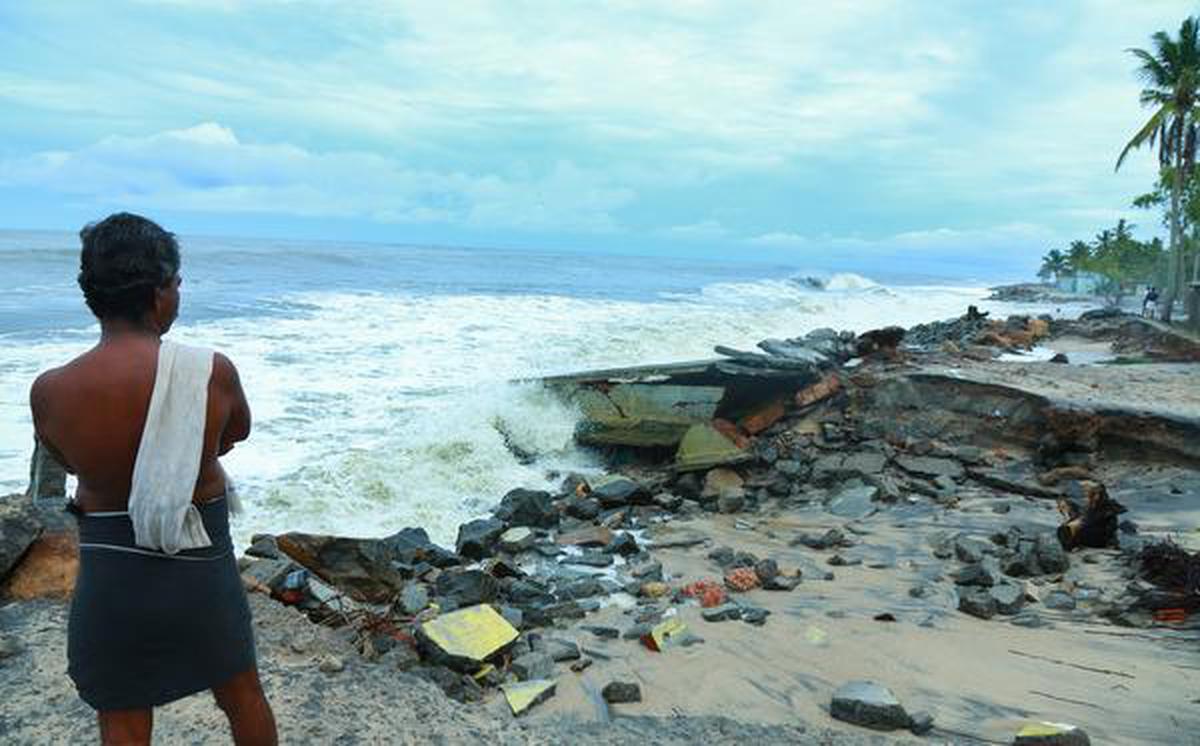Description

Copyright infringement is not intended
Context: The Ministry of Earth Sciences, informed the Lok Sabha that of the 6,907.18 km long Indian coastline of the mainland, about 34% is under varying degrees of erosion, while 26% is of the coastline is of an accreting nature, and the remaining 40% is in a stable state.
- The National Centre for Coastal Research (NCCR), Chennai is monitoring shoreline erosion since 1990 using remote sensing data and GIS mapping techniques.
- In terms of percentage, West Bengal, with a 534.35 km-long coastline, suffered erosion along about 60.5% of the coast (323.07 km) over the period from 1990 to 2018.
- This is followed by Kerala, which has 592.96 km of coastline and 46.4% of it (275.33 km) faced erosion.
- Tamil Nadu, recorded erosion along 42.7% of it (422.94 km).
- Gujarat recorded erosion along 27.06% (537.5 km) of it.
- Union Territory of Puducherry, with a 41.66 km-long coastline, about 56.2% of its coast (23.42 km) recorded erosion.
- The Indian National Centre for Ocean Information Services (INCOIS), has prepared and published an atlas of Coastal Vulnerability Index (CVI) maps for the entire coastline of India at a 1:100000 scale using data on sea level rise, coastal slope, shoreline change rate, coastal elevation, coastal geomorphology, tidal range and significant wave height.
- The XVth Finance Commission had recommended the creation of a National Disaster Risk Management Fund (NDRMF) and State Disaster Risk Management Fund (SDRMF) comprising a Mitigation Fund at the National and State-levels (NDMF/SDMF), and a Response Fund at the National and State level (NDRF/SDRF) for the award period from 2021-22 to 2022-26.
- It has also made specific recommendations for ‘Mitigation Measures to Prevent Erosion’ under NDMF and ‘Resettlement of Displaced People Affected by Erosion’ under NDRF’.
What is Coastal erosion?
- It is the process by which local sea-level rise, strong wave action, and coastal flooding wear down or carry away rocks, soils, and/or sands along the coast.
- There are four main processes of coastal erosion. These are corrosion, abrasion, hydraulic action and attrition.
- Coastal erosion structures Seawalls, revetments, bulkheads, groins and breakwaters may reduce erosion in the short term.
https://www.thehindu.com/sci-tech/energy-and-environment/34-of-indias-coastline-is-eroding-ministry-of-earth-sciences/article65305899.ece















